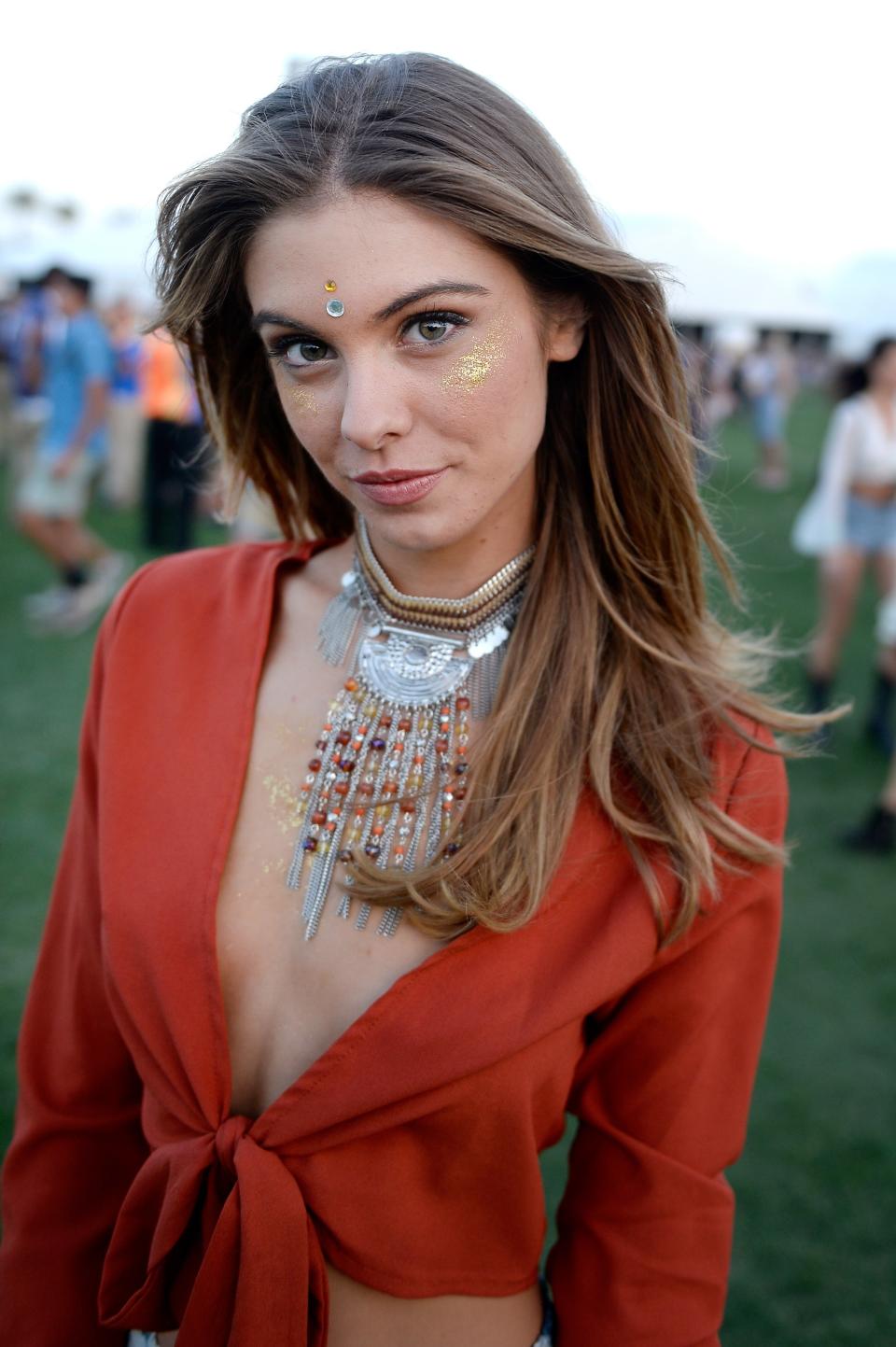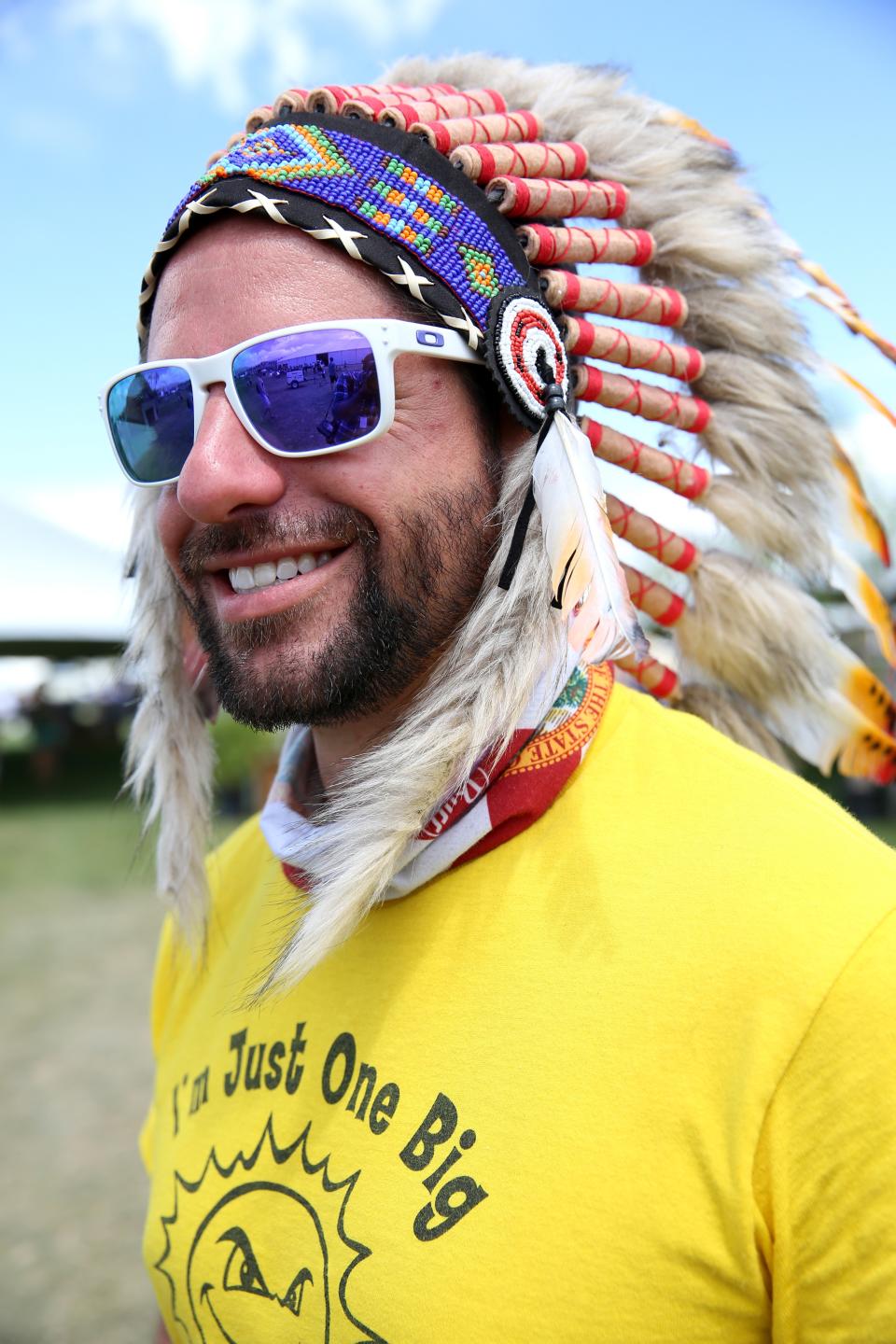Cultural Appropriation at Coachella 2018 No Longer Phases Me As a Black Man
In this op-ed, culture writer Dillon Johnson explains his new perspective toward cultural appropriation and why it no longer phases him.
What do Kylie Jenner, Vanessa Hudgens, and Alessandra Ambrosio all have in common? They’ve all taken part in appropriative fashion at Coachella. Like several other festival-goers, they've chosen to dress in styles plucked from someone else’s culture, often disregarding the historical and sometimes spiritual significance of their looks. Is it because they genuinely don’t care about the minority groups they've appropriated from? Or is it because instead of educating society on why we should all be more respectful, we just point fingers? Whatever the reason, it’s 2018, and I’ve grown numb to Coachella's cultural appropriation offenders.
Cultural appropriation is defined as the act of co-opting symbols and practices from one culture (usually a minority culture) without proper understanding of, or respect for, its original significance. Often times, appropriators reduce the item in question to an exotic fashion trend. One of the more prevalent culturally appropriative offenses at Coachella is the bindi worn as a forehead accessory. They're viewed as a sign of awakening in South Asian culture, and surely Coachella attendees aren't experiencing any sort of rebirth.

Street Style At The 2016 Coachella Valley Music And Arts Festival - Weekend 1
Matt Cowan/Getty ImagesCoachella started in 1999 and it's since evolved into this otherworldly experience where people can escape societal norms and embrace a more adventurous, experimental approach to style. I can’t help but think that mindset sets the stage for cultural appropriation at Coachella. Perhaps the white man in a warbonnet wore it because he thought it was "cool" and was unaware that in some Native American cultures, they’re earned through selfless acts of courage — not revelry in the desert. Perhaps the white woman with box braids didn’t know black women are discriminated against for having that same hairstyle. Education is key in helping to reduce culturally appropriative looks, and we're already starting to see a seismic shift in our attitudes toward the concept. Some people didn't understand why it was considered so terrible to dress that way, but now they do. Why has this perspective changed so dramatically?

Street Style At The 2015 Coachella Valley Music And Arts Festival - Weekend 1
Rachel Murray/Getty ImagesOne reason could be the proliferation of appropriation-shaming on social media. When someone wears a culturally-appropriative look, critics typically point fingers, put them on blast, and really break them down. This is known as call-out culture. While it's important to hold people accountable, today's call-out culture seems to be less about enlightening others and more about making yourself feel good that you're on some sort of moral high-ground. It's more productive to have a respectful, educational discussion than to simply attack someone because of their wrongdoing. It increases the chances that offenders will change their minds and become better people because of it.
In 2017, we saw Adrienne Keene, a Native American writer and activist and founder of the Native Appropriations blog, bring attention to a few festival-goers who donned warbonnets. One of the offenders made a public apology admitting that she was simply unaware. In that instance, the offender was transparent about her ignorance and she demonstrated a willingness to learn while Adrienne showed a willingness to inform. In cases like these, offenders aren't necessarily appropriating out of a place of hate, which is why I don’t feel my blood pressure rising every time it happens. They're also actively trying to change their behavior. Instead of offering mere lip service by way of an apology, people are correcting and adjusting. For example, bindis are being replaced with glitter eye accents and festival-goers are opting out of wearing cornrows. If you spend a few minutes scrolling the #Coachella2017 vs. #Coachella2018 hashtags on Instagram, you can see, visibly, that culturally-appropriative looks are fewer and further between.

Street Style At The 2014 Coachella Valley Music and Arts Festival
Imeh Akpanudosen/Getty ImagesThat isn't to say there aren't any egregious offenders. At Coachella 2018, Teen Vogue witnessed and documented quite a few attendees engaging in cultural appropriation. It's never OK to wear someone's culture as a costume, especially not for the sake of getting double taps. But at the same time, I no longer feel like people of color should be bitter and on the defensive during Coachella season to shut down outrageous cultural appropriation offenders. I'm willing to inform and educate those that are willing to learn, but I’ve chosen to shift my energy away from the people opting to stay ignorant. At this point, in 2018, if you're choosing to wear your ignorance like a badge of honor, that just shows you don’t care about what is going on around you, and I'm choosing to not care about you. I’ve seen progress made by others and I’m not letting myself be bitter by a select few. In fact, with all the change that’s happened this year at Coachella, I'm hopeful next year will be the year of cultural appreciation over appropriation. But we will only get to that place through thoughtful discussion and understanding on both sides of the debate.
Related: "I Wear a Hijab Because It's Pretty": White Coachella Attendees on Cultural Appropriation
Check this out:

